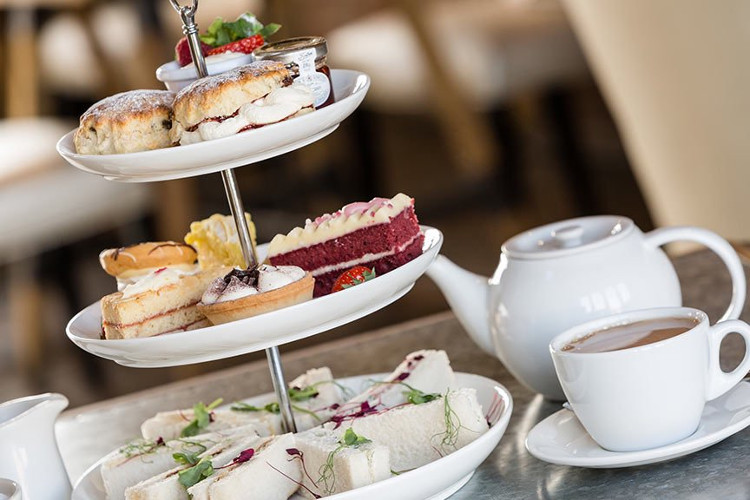English afternoon tea - History and principles for enjoyers
Afternoon Tea (Afternoon Tea) comes from England in the early 1840s, is considered a snack around 4pm.
Anna, the 7th duchess of Bedford (England) is considered the first person to create the afternoon tea culture . At that time, she often complained about being "tired" every late afternoon because she only ate two main meals in the morning and evening. The solution offered was a light meal, with a tea pot and some sweet and salty food together, served separately in the room at the end of the afternoon. Later, the duchess's friends were also invited to such afternoon tea. This habit was maintained when she returned to London. The afternoon tea party is therefore also expanded, with more attendees, mostly "drinking tea and walking on the grass".

Usually, there will be a variety of side dishes with afternoon tea.
Afternoon tea in the middle of the nineteenth century is almost exclusively for upper class women in the UK. When Queen Victoria began to participate in the afternoon tea ceremony and was popular, it became a more popular activity, known by the more common name "Tea Party" . Each of these tea ceremonies sometimes reaches 200 guests, taking place from 4pm to 7pm. The number of participants can come and go freely at the tea party, not fixing participants from start to finish. Today, afternoon tea in the UK is considered a hobby, a passion or a form of organizing special events such as birthdays, pre-wedding parties or fun with friends.
There is no specific rule about the menu of a traditional afternoon tea party, but will usually include a variety of side dishes, served on a multi-tiered tray, including some finger sandwiches (sandwich small type), some homemade pastries, scone cakes are hot with ice cream and fruit jam . Among these, cakes scones are added to the traditional afternoon tea menu later than those other Items. The teas used in the afternoon tea are not fixed, sometimes up to a hundred types, but most often there are types like Assam, Darjeeling, Earl Gray or Lapsang Souchong . Some places will have more glasses. champagne.

Today, the afternoon tea menu is served in the UK and many other parts of the world are called High Tea.
Occasionally you will see many large hotels serving Afternoon Tea under the name "High Tea". Traditionally, those in the upper class will use afternoon tea at around 4pm, also called "low" or "Afternoon" tea because they are served at the sofa sets or tea tables, just before the fashion show in the ladies' park Hyde Park. Meanwhile, people in the lower classes will use tea in the later hours, around 5 or 6 pm, or with dinner on the dining tables (high tables - high). The name High Tea is also born. Shortly thereafter, the upper class developed their own way of enjoying tea and also called "High Tea", with some salty dishes such as salmon, pigeon meat, veal, and cake. baked, omelette, potato and fruit dessert .
Today, the afternoon tea menu is served in the UK and many other parts of the world are called High Tea. In some hotels, such as the famous The Ritz hotel in London, the concept of "High tea in London" is used to promote afternoon tea because there are a large number of guests from all over. world. In Vietnam, many large hotels such as Pan Pacific Hanoi . also serve afternoon tea with the same form as afternoon tea in the UK but there are variations to suit the local culture, with the price for each set. from VND 330,000.
- The 5 most basic principles of health and exercise
- The '5 correct' principle in drug use
- Here are 10 English words that are hard to pronounce the earth
- 7 golden principles that help live long
- Test English proficiency with WordBanker 1.0
- These are 6 very simple English words that are mispronounced by native speakers
- Revealing an interesting secret about coffee makes you not surprised
- History of birth and hacker concepts
- Detect when people lie most
- History of hematology
- Interesting history of blood type A
- Life does not worry about cancer if you learn 8 principles of eating famous Japanese doctors
 'Fine laughs' - Scary and painful torture in ancient times
'Fine laughs' - Scary and painful torture in ancient times The sequence of numbers 142857 of the Egyptian pyramids is known as the strangest number in the world - Why?
The sequence of numbers 142857 of the Egyptian pyramids is known as the strangest number in the world - Why? History of the iron
History of the iron What is alum?
What is alum?